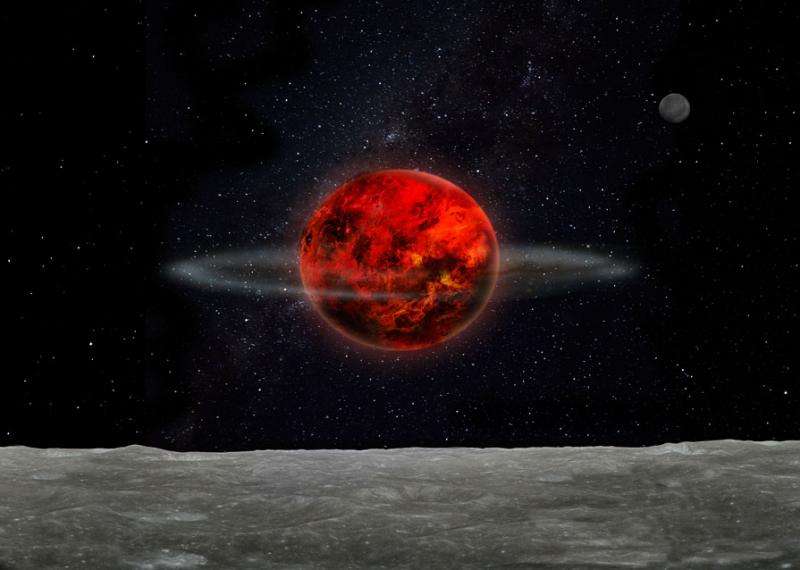Gold and platinum offer clues about the moon's mysterious tilt

A total solar eclipse occurs somewhere on Earth about once every year and a half, on average. But imagine if it happened every single month. For this to be the case, the moon would have to orbit Earth in the same plane in which Earth travels around the sun - that way, the new moon would always come directly between us and the sun.
Instead, the moon circles Earth in a slightly different plane that's tilted by 5 degrees relative to the plane of the solar system. It used to be even worse - about 4.5 billion years ago, when the moon was newly formed and hadn't spent much time under the influence of Earth's tides, it was askew by 10 degrees.
Experts believe the moon was born after a Mars-sized object slammed into the young Earth and knocked loose a bunch of debris that coalesced into the satellite we know today. If simple physics had prevailed, the resulting moon should have been tilted by no more than 1 degree.
What happened? It's an enduring mystery. Scientists even have a name for it that sounds like the title of a Robert Ludlum novel: The lunar inclination problem.
Two researchers from the Observatoire de la Cote d'Azur in France have a new theory to explain this situation. Writing in the journal Nature, they posit that the young moon was pulled out of its original orbital plane by the gravity of large objects whizzing by.
In the past, scientists have considered the effects of the objects that collided with Earth. But as Kaveh Pahlevan and Alessandro Morbidelli note, before each collision, there were probably 1,000 to 10,000 near-misses.
Pahlevan and Morbidelli used computer simulations to estimate the effect of all these flybys during the first 100 million years of the moon's history. They found that no single object would have been big enough to yank the moon out of its expected orbital plane all by itself. But the gravity of many objects combined could have done the job.
In fact, the pair calculated that their scenario works beautifully if the objects that struck Earth and added the last 0.75 percent to 1.5 percent of the planet's mass numbered less than five.
The story not only explains the moon's odd tilt, it also accounts for the abundance of certain metals in Earth's crust - especially gold and platinum.
As Robin Canup of the Southwest Research Institute in Boulder, Colo., explained in an essay that accompanies the study, both of these precious metals have "strong chemical affinities for iron." If these elements had been present in the Earth's early, molten days, the iron that sank to the planet's core would have taken the gold and platinum along with it. But enough of it exists at the surface that it must have arrived here after the core had formed.
Indeed, these metals were probably delivered by "large objects left over from the formation of the inner planets," wrote Canup, who studies the origins of the solar system. If there were many such objects, some of them should have hit the moon and deposited gold and platinum there, too. The relative dearth of these precious metals on the moon strongly suggests that Earth was hit by a few large objects rather than many small ones, she wrote.
Overall, the evidence from these metals offers compelling evidence in support of Pahlevan and Morbidelli's theory that planetary dregs passing by the young moon skewed its orbital plane, she wrote.
"Had such a population of objects not existed, the Moon might be orbiting in Earth's orbital plane, with total solar eclipses occurring as a spectacular monthly event," Canup wrote. "But our jewelry would be much less impressive - made from tin and copper, rather than from platinum and gold."
More information: Collisionless encounters and the origin of the lunar inclination, Nature, DOI: 10.1038/nature16137
Journal information: Nature
©2015 Los Angeles Times
Distributed by Tribune Content Agency, LLC.




















